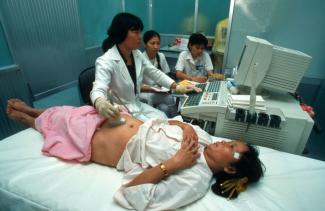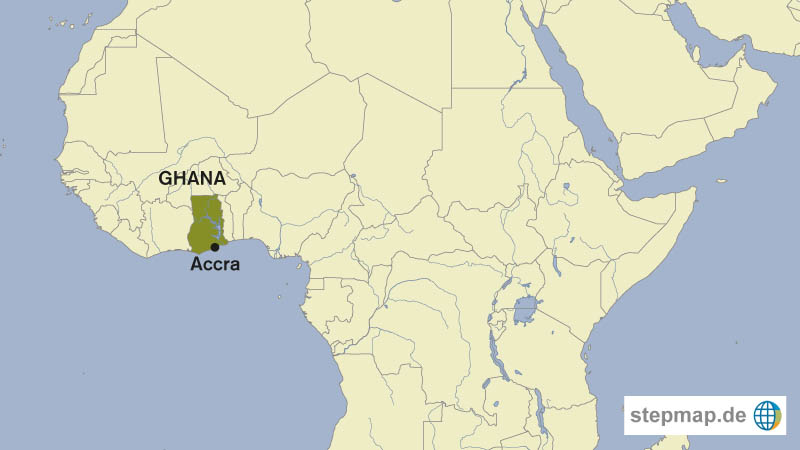Maternal mortality
More efforts needed

In 1990, the global MMR was 385 per 100,000 live births. In 2015, it was 216. That was an improvement of 44 % over 25 years, but it fell short of the 75 % reduction the UN had pledged to achieve as the fifth Millennium Development Goal (MDG). Thanks to the MDG agenda, initiatives were taken that helped to improve maternal health – but not as much as aspired. The MDGs were adopted in 2000.
Nine of the 95 countries that had an MMR of more than 100 in 1990 achieved the 75 % goal: Bhutan, Cambodia, Cabo Verde, Iran, Lao, the Maldives, Mongolia, Rwanda and Timor-Leste. Most countries made progress, but the UN categorised 26 countries as having made no progress in the report “Trends in maternal mortality: 1990 to 2015”. The report was published by several UN agencies.
Developing regions accounted for 99 % of the global maternal deaths in 2015, with sub-Saharan Africa alone accounting for 66 %. Together with Oceania, it is the region with the highest MMR. The greatest progress was observed in East Asia. The populous countries Nigeria and India were estimated to account for more than one third of all maternal deaths. In relative terms, Sierra Leone was the worst place to become a mother in 2015: the MMR was 1360.
MMR figures are high in regions marked by violent conflicts, disasters and other humanitarian crises. A high MMR is defined to be 300 or above. Seventy-six percent of the countries with high MMRs are fragile states.
HIV/Aids can be a major obstacle to reducing maternal mortality. Where HIV infection rates are high, health systems and infrastructure tend to be overburdened. Some 1.6 % of all maternal deaths around the world are estimated to be directly related to Aids. The UN report stresses, moreover, that statistics tend to be particularly poor and unreliable for those regions where the needs are greatest.
Insufficient and unreliable data are a big problem. Since many countries lack comprehensive systems for collecting the necessary data, the report is mainly based on estimates. The uncertainty of the estimates is taken into account too. For example, Nigeria had an estimated MMR reduction of 40 % between 1990 and 2015. But the uncertainty interval for that estimate ranges from -5 % to 56.3 %, so there actually may not have been any reduction at all. The authors reckon the likelihood of that being the case is about 10 %, so they put Nigeria in the “no progress” group.
Several strategies have proven successful to reduce maternal mortality. They range from improving health systems to reducing social and structural barriers. The World Health Organization (WHO) published “Strategies towards ending preventable maternal mortality” based on the experience of the countries that successfully reduced their MMR. The WHO strategies specify five objectives:
- Address inequities in access to – and the quality of – sexual, reproductive, maternal and newborn health care.
- Ensure universal health coverage for comprehensive sexual, reproductive, maternal and newborn health care.
- Address all causes of maternal mortality, reproductive and maternal morbidities, and related disabilities.
- Strengthen health systems to respond to the needs and priorities of women and girls.
- Ensure accountability to improve quality of care and equity.
In order to achieve the SDG target of less than 70 maternal deaths per 100,000 live births by 2030, the global MMR must be reduced by 7.5 % each year. That is more than three times the annual reduction rate of 2.3 % observed between 1990 and 2015. According to the authors, the goal is attainable. Their call to action concludes: “With rapid acceleration of the efforts and progress catalysed by MDG 5, ending preventable maternal mortality on a global level can be achieved by 2030.”
Links
WHO et al., 2015: Trends in Maternal Mortality: 1990 to 2015.
http://apps.who.int/iris/bitstream/10665/194254/1/9789241565141_eng.pdf?ua=1
WHO, 2015: Strategies towards ending preventable maternal mortality.
http://who.int/reproductivehealth/topics/maternal_perinatal/epmm/en/













